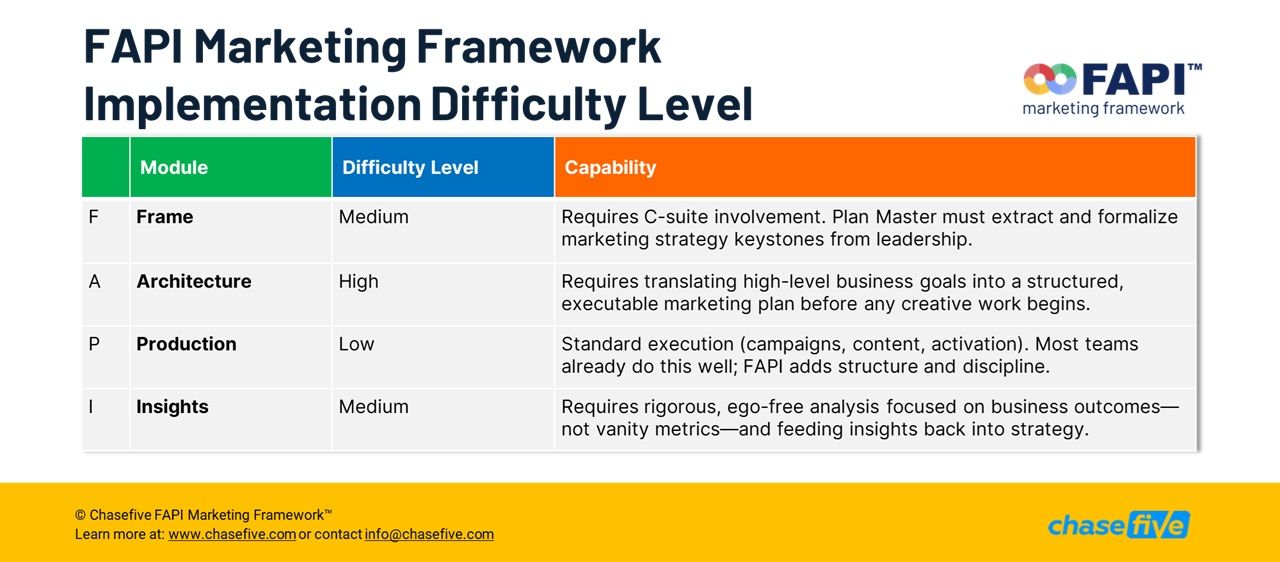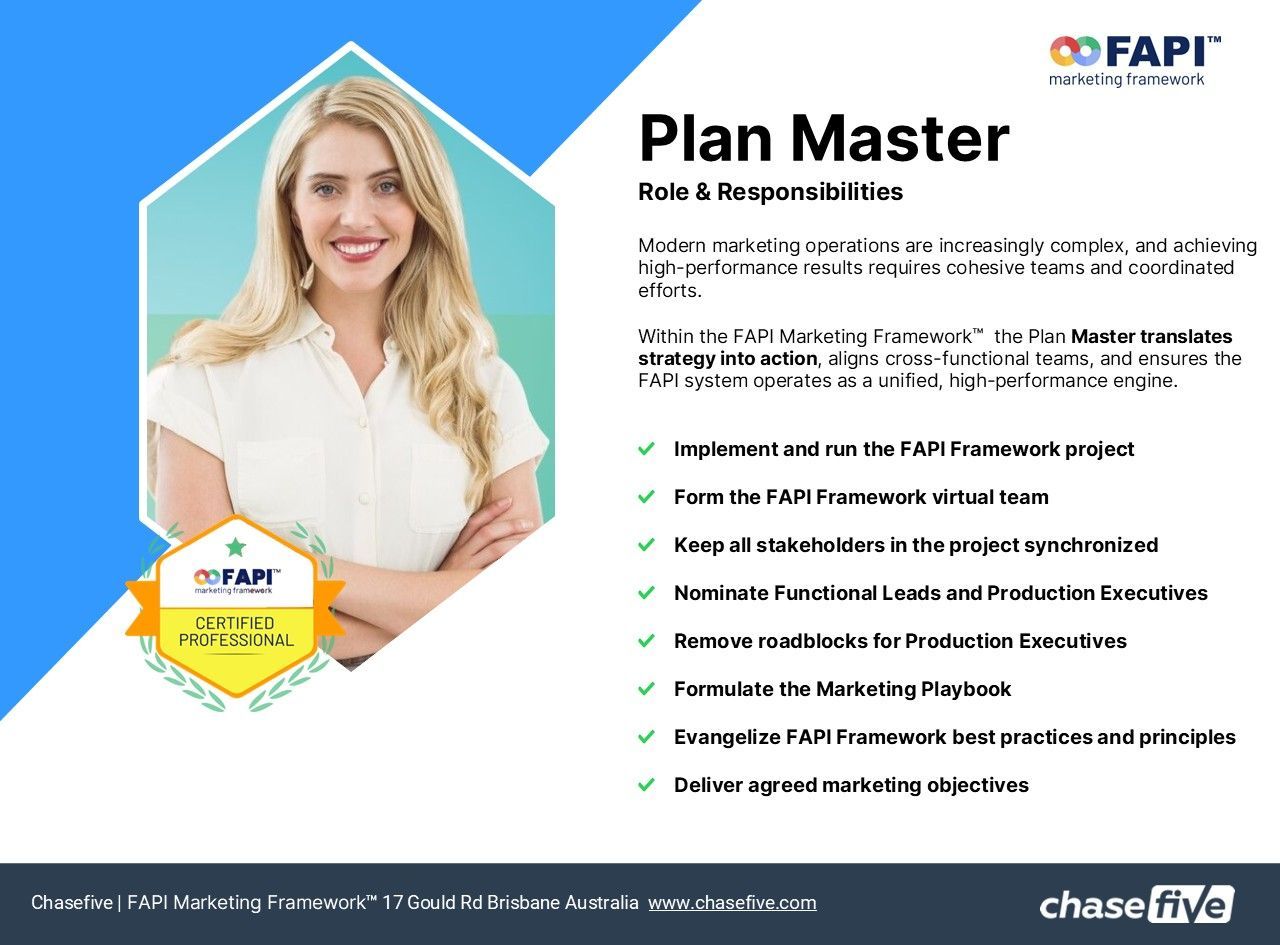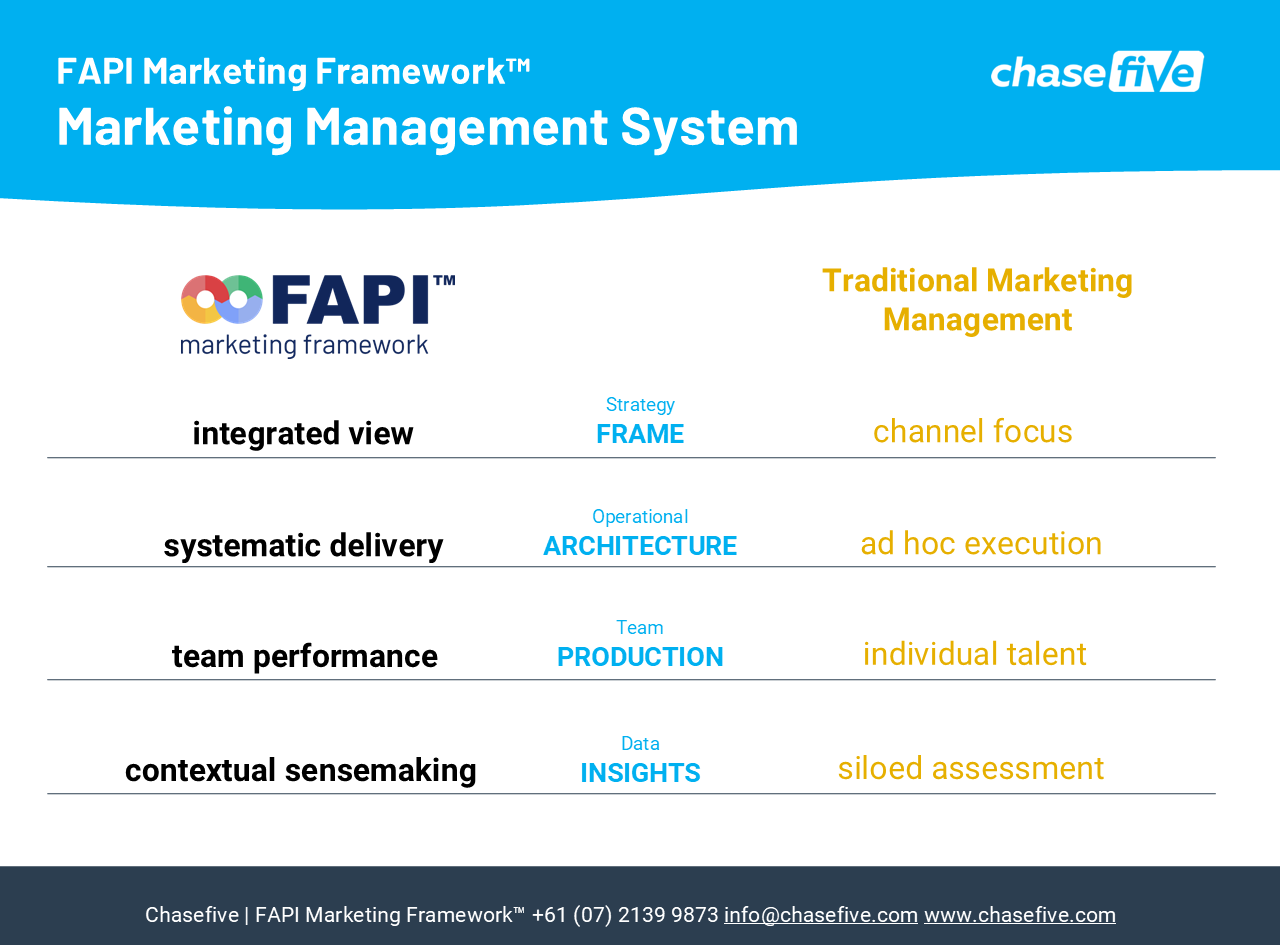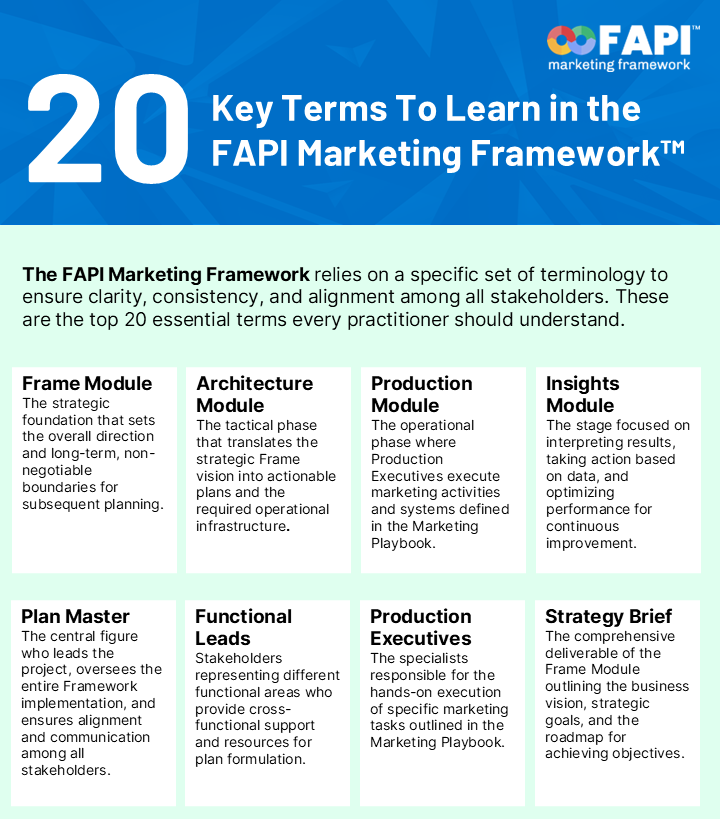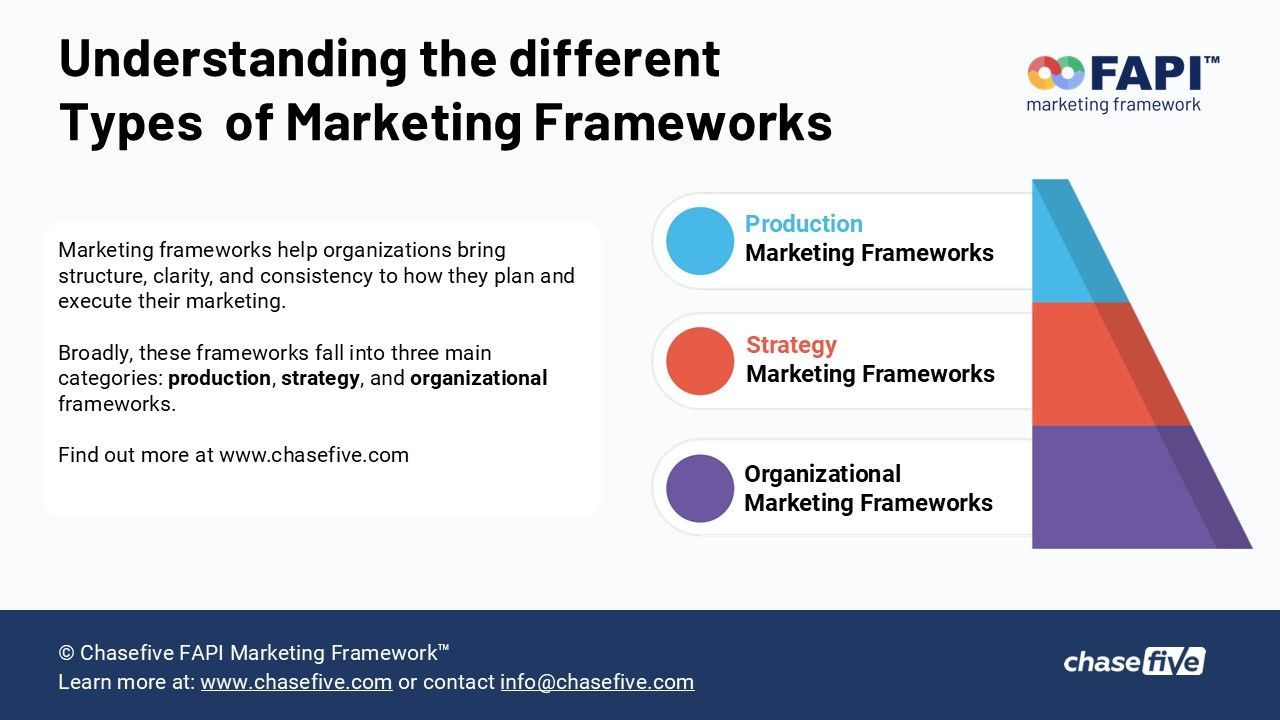FAPI Marketing Framework™ launches Certification program to enhance marketing management training
The industry-leading certification program is designed to empower marketing professionals by enhancing their marketing planning and management competence.
FAPI Marketing Framework™, the sequential marketing planning and management framework, is proud to announce the launch of its highly anticipated FAPI Marketing Framework™ Certification.
The industry-leading certification program is designed to empower marketing professionals by enhancing their marketing planning and management competence.
With the FAPI Marketing Framework Certification, marketing professionals gain a comprehensive understanding of the FAPI Marketing Framework™, a proven methodology that guides leadership teams in building and organizing high-performing marketing functions within companies of all sizes. This certification equips professionals with valuable knowledge and skills, enabling them to develop and implement effective marketing strategies and campaigns.
"Obtaining the FAPI Marketing Framework™ Certification is a significant milestone for fledgling marketing professionals," said Marcel Verni, Vice President of International Business for FAPI Marketing Framework™. "We believe that by completing this certification, marketers can elevate their expertise, expand their strategic capabilities, and deliver exceptional results for their organizations."
The FAPI Marketing Framework Certification covers various essential topics, including market analysis, target audience segmentation, value proposition development, marketing mix strategies, and performance measurement. Participants will gain insights into aligning marketing plans with overall business strategies, enhancing customer engagement, and driving sustainable business growth.
Marketing professionals interested in gaining their FAPI Marketing Framework Certification can visit the official certification page at https://www.chasefive.com/fapi-certification. The certification program offers comprehensive training and a rigorous examination to ensure a thorough understanding of the framework's principles and application.
"We are thrilled to offer this certification program to marketing professionals worldwide," added Marcel Verni. "The FAPI Marketing Framework™ Certification sets a benchmark for excellence in marketing planning and management. It provides professionals with a competitive edge and validates their expertise in implementing successful marketing strategies."
By obtaining the FAPI Marketing Framework™ Certification, marketing professionals can enhance their career prospects, gain recognition within the industry, and contribute significantly to their organizations' marketing success.
For more information about the FAPI Marketing Framework™ Certification, please visit https://www.chasefive.com/fapi-certification or contact academy@fapiframework.com
